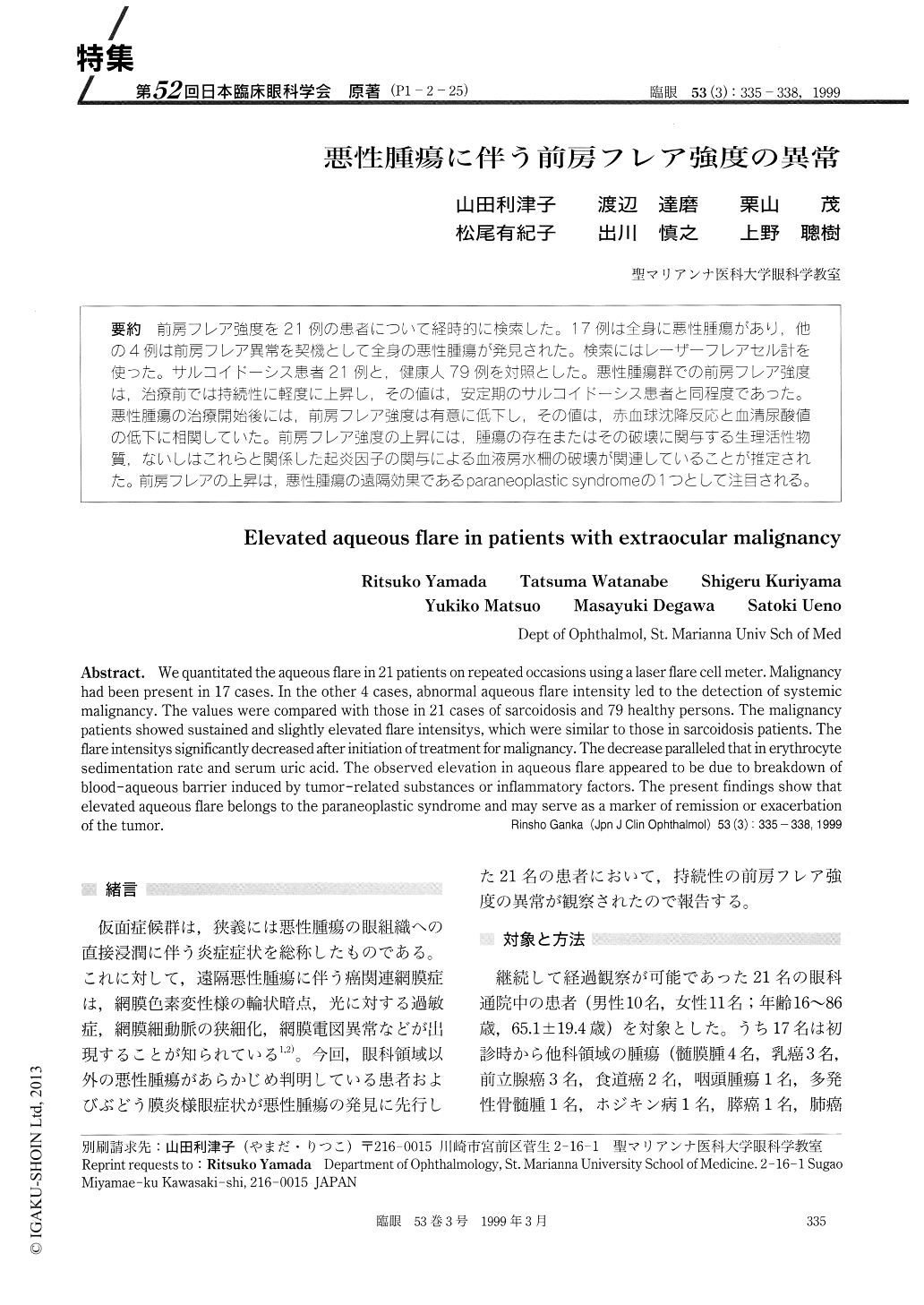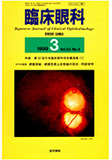Japanese
English
- 有料閲覧
- Abstract 文献概要
- 1ページ目 Look Inside
(P1-2-25) 前房フレア強度を21例の患者について経時的に検索した。17例は全身に悪性腫瘍があり,他の4例は前房フレア異常を契機として全身の悪性腫瘍が発見された。検索にはレーザーフレアセル計を使った。サルコイドーシス患者21例と,健康人79例を対照とした。悪性腫瘍群での前房フレア強度は,治療前では持続性に軽度に上昇し,その値は,安定期のサルコイドーシス患者と同程度であった。悪性腫瘍の治療開始後には,前房フレア強度は有意に低下し,その値は,赤血球沈降反応と血清尿酸値の低下に相関していた。前房フレア強度の上昇には,腫瘍の存在またはその破壊に関与する生理活性物質,ないしはこれらと関係した起炎因子の関与による血液房水柵の破壊が関連していることが推定された。前房フレアの上昇は,悪性腫瘍の遠隔効果であるparaneoplastic syndromeの1つとして注目される。
We quantitated the aqueous flare in 21 patients on repeated occasions using a laser flare cell meter. Malignancy had been present in 17 cases. In the other 4 cases, abnormal aqueous flare intensity led to the detection of systemic malignancy. The values were compared with those in 21 cases of sarcoidosis and 79 healthy persons. The malignancy patients showed sustained and slightly elevated flare intensitys, which were similar to those in sarcoidosis patients. The flare intensitys significantly decreased after initiation of treatment for malignancy. The decrease paralleled that in erythrocyte sedimentation rate and serum uric acid. The observed elevation in aqueous flare appeared to be due to breakdown of blood-aqueous barrier induced by tumor-related substances or inflammatory factors. The present findings show that elevated aqueous flare belongs to the paraneoplastic syndrome and may serve as a marker of remission or exacerbation of the tumor.

Copyright © 1999, Igaku-Shoin Ltd. All rights reserved.


